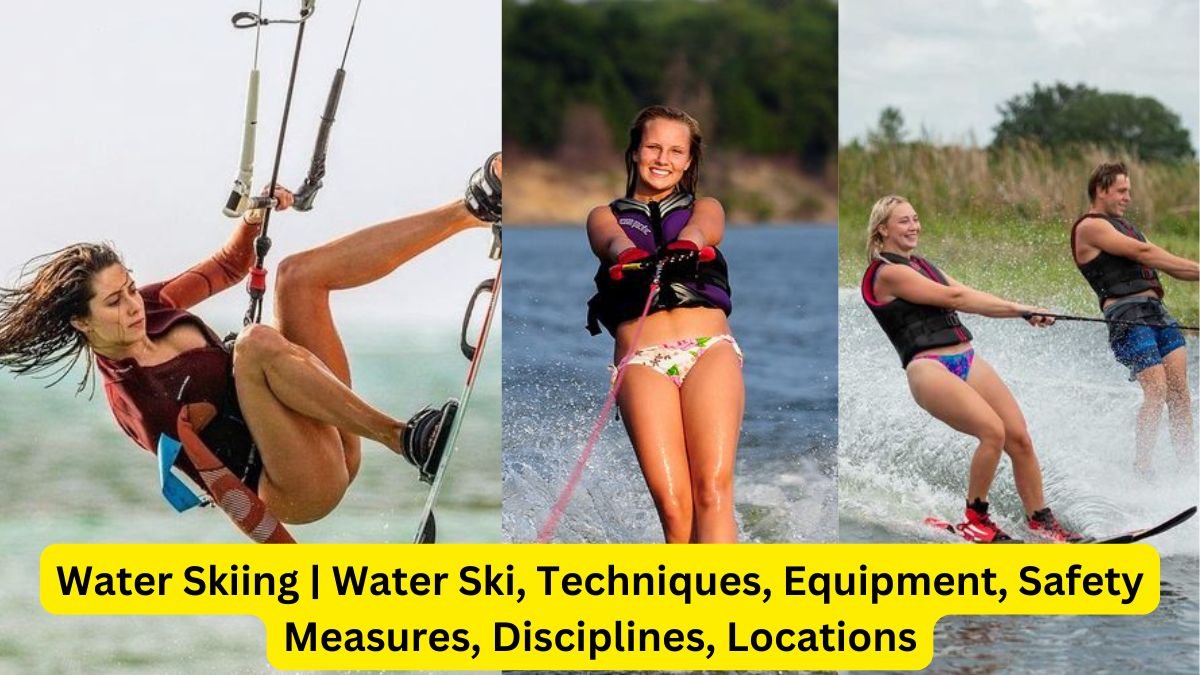Water skiing is an exhilarating water sport that combines speed, skill, and the beauty of nature. It involves being towed behind a boat while gliding on water skis, providing a unique blend of adrenaline and fun. This article will explore the history, techniques, equipment, safety measures, and various disciplines of water skiing, along with insights into its growing popularity worldwide.
History of Water Skiing
Water ski was invented in 1922 by Ralph Samuelson, who used a pair of boards as skis and a clothesline as a towrope on Lake Pepin in Lake City, Minnesota. After experimenting with different techniques, Samuelson perfected the art of water skiing by leaning backward and holding the ski tips up. His brother Ben towed him, and they reached a speed of 20 mph. Samuelson spent the next 15 years performing shows and teaching water skiing across the United States.The first patent for water skis was granted to Fred Waller in 1925, and the sport began to gain popularity in the following decades. By the 1940s and 1950s, water skiing had become a well-established recreational activity, thanks in part to the promotional efforts of Dick Pope Sr., who helped popularize the sport through water ski shows at Cypress Gardens in Florida.Today, water skiing is a global sport with millions of participants and numerous competitions held annually.
Basic Techniques of Water Skiing
Getting Started
To begin water skiing, a skier typically starts in one of two ways: a “wet start” or a “dry start.” The wet start is the most common method, where the skier enters the water with their skis on or jumps in without skis, putting them on while in the water. The skier then holds onto the tow rope while in a crouched position, ready for the boat to pull them up.
- Wet Start:
- The skier enters the water with skis on or jumps in without skis.
- They hold the tow rope while in a crouched position.
- When ready, the skier signals the boat driver to accelerate.
- Dry Start:
- The skier stands on the shore or a pier with skis on.
- This method is recommended for advanced skiers only.
The Deep-Water Start
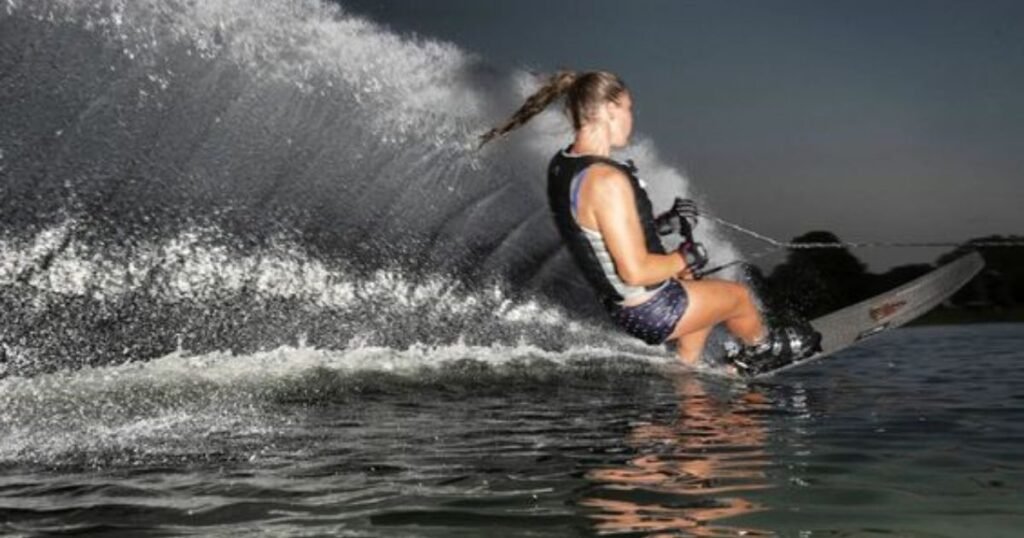
The deep-water start is the most common method used by water skiers. The skier crouches in the water with their skis pointing upwards. Once the boat accelerates, the skier uses their strength to pull themselves up into an upright position. It is essential to maintain balance by leaning back slightly and keeping the legs bent.
Turning and Maneuvering
Once the skier is up and gliding on the water, turning is accomplished by shifting weight left or right. The skier’s body should be balanced between the balls of the feet and the heels, and the arms should be relaxed but extended to reduce strain. Communication between the skier and the boat driver is crucial, often using hand signals to indicate speed adjustments or other commands.
Equipment for Water Skiing
Skis
Water skis have evolved significantly since their inception. Modern skis are made from advanced materials such as thermoplastics, aluminum, Kevlar, and carbon fiber. These materials enhance performance and durability while reducing environmental impact.
- Types of Skis:
- Combo Skis: Two skis used together, ideal for beginners.
- Slalom Skis: A single ski used by more advanced skiers, allowing for greater agility.
- Trick Skis: Shorter and wider skis designed for performing tricks.
Tow Boats
Tow boats are specially designed for water skiing, with a small hull and flat bottom to minimize wake. Competitive ski boats are equipped with a direct drive motor to ensure optimal wake shape. Recreational boats can also serve as platforms for water skiing, with popular types including bowriders and deckboats.
Tow Ropes and Handles
The tow rope must be long enough for maneuvering, typically around 23 meters (75 feet). The handle can be held vertically or horizontally, depending on the skier’s comfort. The rope and handle are anchored to the boat, ensuring a secure connection.
Safety Measures
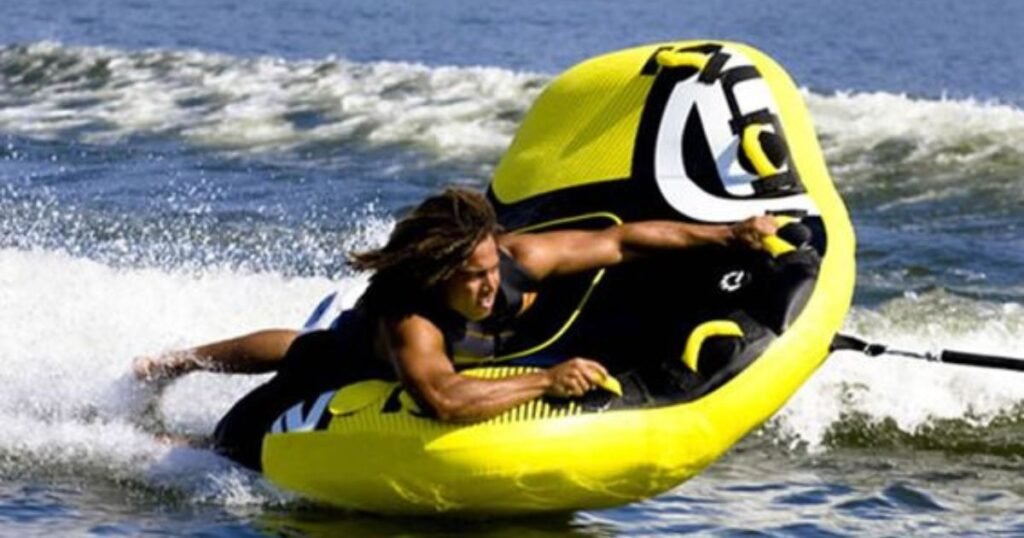
Safety is paramount in water skiing due to the potential dangers involved. Here are some essential safety measures:
- Life Jackets: All skiers should wear a personal flotation device, regardless of swimming ability. Specially designed ski vests allow for movement while providing buoyancy.
- Spotter: A third person, known as the spotter or observer, should be present in the boat to monitor the skier and communicate with the driver.
- Clear Water Space: Ensure a wide skiing area (at least 200 feet) with a depth of 5 to 6 feet to avoid hazards.
- Hand Signals: Establish a set of hand signals for communication between the skier and the boat driver.
- Avoid Alcohol: Operators of tow boats should refrain from consuming alcohol to ensure safe driving.
Disciplines of Water Skiing
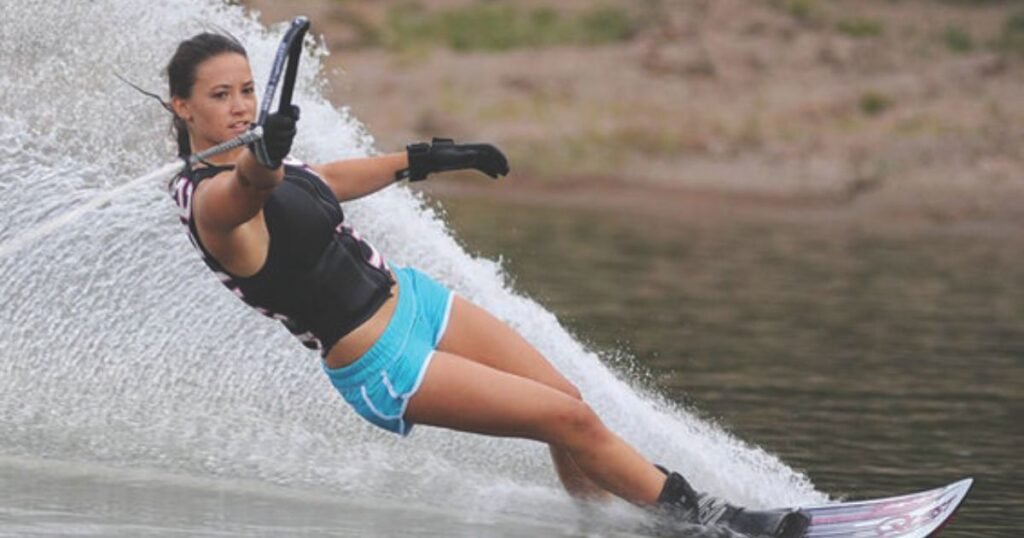
Water skiing encompasses various disciplines, each offering unique challenges and experiences:
1. Three-Event Tournament Water Skiing
This competitive format includes three events: slalom, jump, and trick skiing. Each event tests different skills and techniques.
- Slalom: Skiers use one ski and navigate through a series of buoys. The course consists of 26 buoys, and skiers are scored based on the number of successful buoys cleared and the speed of the boat.
- Jump: Skiers attempt to jump off a ramp and achieve the longest distance. They have three attempts, and the winner is determined by the farthest distance traveled.
- Trick: Skiers perform a series of tricks during two 20-second runs. Each trick has a point value, and the skier with the highest score wins.
2. Barefoot Water Skiing
Barefoot water skiing involves skiing without skis, requiring higher speeds and specialized techniques. Skiers typically wear wetsuits instead of life jackets for better protection and buoyancy.
3. Show Skiing
Show skiing combines water skiing with entertainment, featuring choreographed performances, costumes, and music. Teams perform tricks and stunts, competing regionally and nationally.
4. Freestyle Jumping
Freestyle jumping is similar to show skiing, where skiers perform stunts off jumps. The goal is to execute tricks while landing safely back on the water.
5. Ski Racing
Ski racing involves one or two skiers racing around a course behind a boat. Races can vary in distance and format, with speeds reaching up to 200 km/h.
Popular Water Skiing Locations
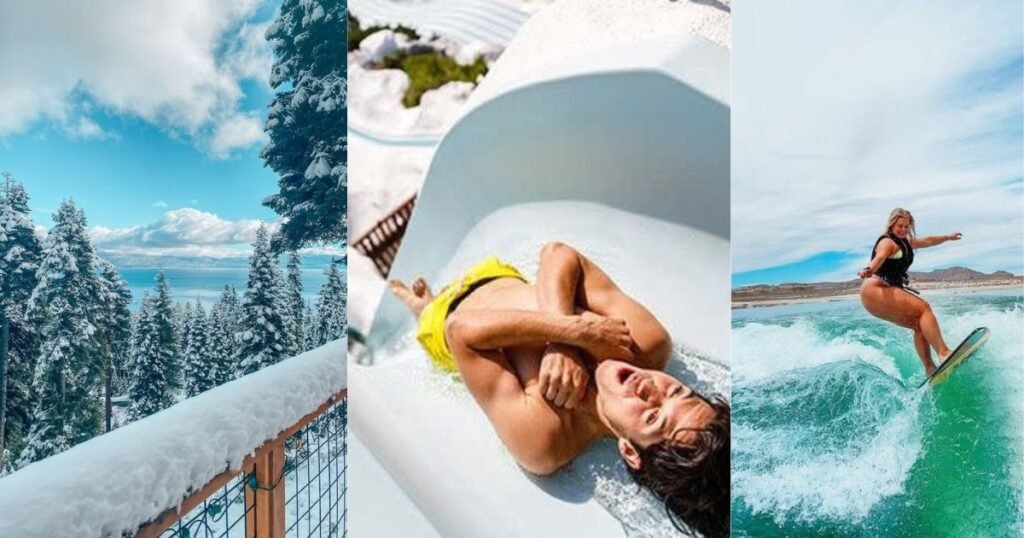
Water skiing can be enjoyed in various locations around the world, with some of the most popular spots including:
- Lake Tahoe, California/Nevada: Known for its stunning scenery and clear waters, Lake Tahoe is a favorite among water skiers.
- Orlando, Florida: Often referred to as the water skiing capital of the world, Orlando hosts numerous competitions and events.
- Cypress Gardens, Florida: A historic site for water skiing, Cypress Gardens is famous for its water ski shows and competitions.
- Lake Powell, Arizona: With its beautiful canyons and warm weather, Lake Powell offers excellent conditions for water skiing.
- The Chain of Lakes, Florida: This area features interconnected lakes ideal for recreational water skiing.
Conclusion
Water skiing is a thrilling sport that offers an exhilarating way to enjoy the water and the outdoors. With its rich history, various disciplines, and the right equipment, anyone can participate in this exciting activity. Whether you are a beginner looking to learn the basics or an experienced skier seeking to refine your skills, water skiing provides a unique blend of fun and challenge.As you prepare for your next water skiing adventure, remember to prioritize safety and choose the right equipment to ensure an enjoyable experience. With the right technique and a passion for the sport, water skiing can be a rewarding and unforgettable experience.
In this blog, we have provided detailed information on Water Skiing. We appreciate you taking the time to read this post about Water Skiing in our blog! If you find this information useful, please share this blog with your friends and family so that they can also know about Water Skiing. Visit our website homepage weblog365.in to read more interesting and informative blogs and stay updated.

My name is Yogesh Pandey, and I hail from Lucknow, India. I work in digital marketing. I have been blogging since 2023. I write about Technology, Entertainment, Automobile, and Lifestyle providing insights to help others find quality products. I am excited to have the opportunity to collaborate with weblog365.in now. You can reach out to me via email at weblog365.in@gmail.com. Let’s connect! 🙏

